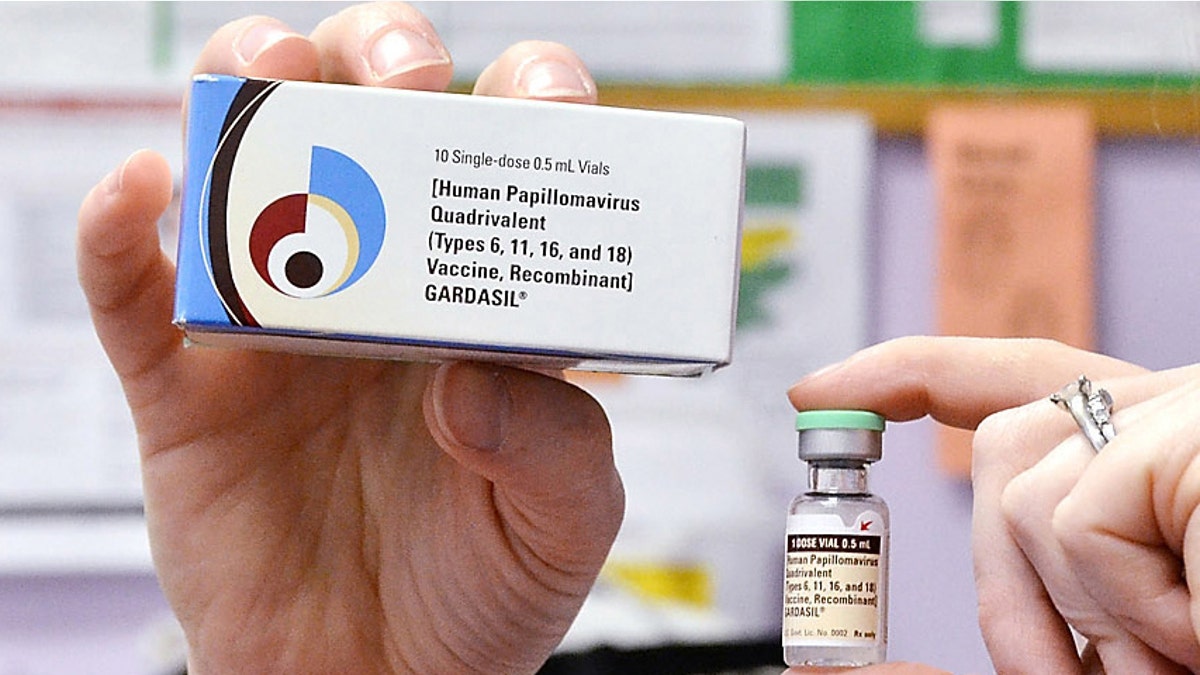
A nurse holds up a vial and box for the HPV vaccine, brand name Gardasil, at a clinic in Kinston, N.C.
New data from the Centers for Disease Control and Prevention (CDC) suggests an increase in cancer cases associated with human papillomavirus (HPV), a common sexually transmitted infection for which several strains can be prevented with vaccination.
The report, published online Thursday in its Morbidity and Mortality Weekly Report, found a rise in HPV-associated cancers from 10.8 per 100,000 people from 2004 to 2008, to 11.7 per 100,000 people from 2008 to 2012, despite a slight decrease in the rate of cervical carcinoma. HPV-linked cancers consist of cancer of the cervix, vulva, vagina, penis, oropharynx, anus and rectum.
CDC researchers conducted the study because cancer registries don’t routinely collect information on HPV DNA presence in cancer tissues, and cancer cases associated with the virus defined by anatomic site and cell type include cancers not caused by HPV, according to a CDC news release. Thus, the number of cancer cases they attributed to HPV were only estimates.
Scientists analyzed data from qualified population-based cancer registries that cover about 99 percent of the U.S. population. They found that between 2008 and 2012, an average of nearly 39,000 HPV-associated cancers were diagnosed annually, including 23,000 among females and nearly 16,000 among males. Cervical carcinomas and oropharyngeal squamous cell carcinomas were the most common of these cancers.
Next, study authors multiplied those counts by the percentages attributable to HPV. They estimated that about 30,700 new cancers were caused by HPV, including 19,200 among females and 11,600 among males. Of those cancer cases the CDC determined were caused by HPV, 28,500 were attributable to types that are preventable with the 9-valent HPV vaccine.
“Most cervical cancers are preventable with regular screening for precancerous lesions among women aged 21–65 years linked with follow-up for abnormal test results,” researchers wrote in their paper, but “there are currently no effective population-based screening strategies for the other HPV-associated cancers.”
According to the CDC, about 14 million people become infected with HPV annually. Currently, about 80 million people, or one in four, people, are infected with HPV in the U.S. The HPV vaccine, which is given in three shots, is recommended for preteen boys and girls at age 11 or 12 so they are protected before potential exposure to the virus.




















